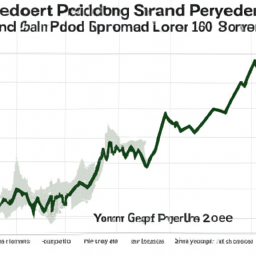The S&P 500 Index Fund is a popular investment option among investors who want broad exposure to the U.S. stock market. The S&P 500 is a financial index that tracks 500 large-cap U.S. companies that span all 11 market sectors. That diversity makes it a good representation of the U.S. economy and a smart investment choice for those looking to gain exposure to the stock market.
S&P 500 funds offer broad exposure to the economy, which means that investors can benefit from the growth of the U.S. economy as a whole. An array of index and mutual funds replicate the S&P 500 and offer investors a chance to invest in the index without having to buy individual stocks. Some of the most popular S&P 500 Index Funds include the Vanguard 500 Index Fund (VFINX), the SPDR S&P 500 ETF Trust (SPY), and the iShares Core S&P 500 ETF (IVV).
One of the main advantages of investing in the S&P 500 Index Fund is its diversification. The index tracks companies across all 11 sectors, including technology, healthcare, and financials. This diversification can help investors reduce their risk because they are not putting all their eggs in one basket. It also means that investors can benefit from the growth of a variety of industries and sectors.
Another benefit of investing in the S&P 500 Index Fund is its low fees. Many of the most popular S&P 500 Index Funds have expense ratios of less than 0.10%, which means that investors can keep more of their returns. For example, the expense ratio is 0.04% for Vanguard 500 Index Admiral (VFIAX), a widely held mutual fund proxy for the S&P 500.
If you're an investor in a broadly diversified total market index fund like the S&P 500, the changes will make a difference, but not a big one. The top 10 holdings of the Fidelity 500 Index Fund (FXAIX) make up around a quarter of the portfolio. This means that changes to the top holdings will have a limited impact on the overall performance of the fund.
In other words, if you had invested in an S&P 500 index fund or ETF at any point after 1900 and held your investments for 20 years, you would have made a positive return. This long-term track record makes the S&P 500 a reliable investment choice for those who want to invest in the stock market.
However, there are also some drawbacks to investing in the S&P 500 Index Fund. One of the main drawbacks is that it is heavily weighted towards large-cap companies. This means that smaller companies are not represented as much in the index, which can limit the potential for growth in those areas.
Another drawback of investing in the S&P 500 Index Fund is that it lacks international exposure. This means that investors who want exposure to international markets will need to look elsewhere. However, many investors choose to invest in international funds separately from their S&P 500 investments.
If you invest in an S&P 500 index fund, you'll receive a dividend yield in the ballpark of 1.7%. Many of the stocks in the major index pay dividends, which can provide a source of income for investors. However, the yield is relatively low compared to other dividend-paying investments, such as real estate investment trusts (REITs) or high-yield bonds.
Overall, the S&P 500 Index Fund is a solid investment choice for those who want broad exposure to the U.S. stock market. Its diversification and low fees make it an attractive option for long-term investors. However, investors should also be aware of its limitations, such as its lack of international exposure and heavy weighting towards large-cap companies.
